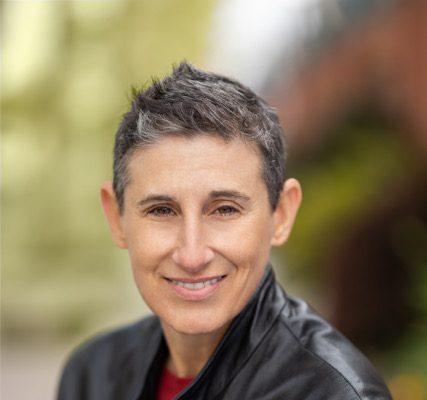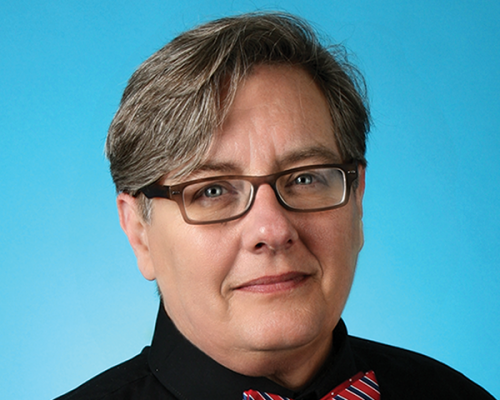by Chuck Colbert
A new survey of LGBT consumers, including many readers of LGBT publications, holds good news for publishers and editors alike.
One takeaway message is that gay media still matters.
Sixty-seven percent of gay men and 58 percent of lesbians, for example, said they viewed an LGBT web site or blog in the past week. That finding is in comparison to 57 percent of gay men and 46 percent of lesbians who report visiting mainstream portals.
Equally encouraging, while 55 percent of gay men and 46 percent of lesbians said they read mainstream general newspapers, 50 percent of gay men and 42 percent of lesbians also reported they read local LGBT publications.
Gay media, it seems, remains relevant and vital to the LGBT community.
And yet there are differences in LGBT media consumption, with gay men more likely than lesbians to use a variety of media, especially mobile apps, while lesbians are more likely than gay men to read LGBT email newsletters.
These findings — and a whole lot more — are part the recently released 7th Annual LGBT Community Survey (http://www.communitymarketinginc.com/7th-annual-lgbt-community-survey/), conducted by gay-owned Community Marketing, Inc. (or CMI), an LGBT marketing research firm based in San Francisco. The report was released in August.
Last month, CMI’s president Tom Roth and senior research director David Paisley hosted a 45-minute webinar on the community survey for more than 200 participants.
Here are a few overall key findings.
• While Facebook dominates in the LGBT media landscape, LGBT-specific web sites show notable growth in readership.
• Starbucks holds first place among brands perceived to be most supportive of the LGBT community, with JC Penney, Target, Apple and Amazon rounding out the top five. At the same time, 75 percent of LGBTs are actively boycotting Chick-fil-A.
• The term “LGBT” has strengthened its lead as the term of preference to describe the community.
• Nearly half of gay/bisexual men and lesbians/bisexual women make financial contributions to charities or non-profits, at least annually. However, transgender respondents are more likely to perform volunteer work.
• Lesbians and bisexual women are far more likely (44 percent) to purchase spa services than gay or bisexual men (32 percent).
CMI’s annual report collected data from 10,000 self-identified gay and bisexual men, more than 4,000 lesbians and bisexual women, and more than 400 transgender people — all from the United States. Data from Canada is also available.
The survey, which took 15-20 minutes to complete, was conducted during May and June 2013. CMI made it accessible through a wide range of venues including more than 200 LGBT web sites, LGBT publications, social media and the marketing firm’s partner organizations such as film festivals, community centers and business associations.
One of the most comprehensive surveys of LGBT consumers in terms of a large sample size, the annual report gives “voice to attitudes and preferences, all things that are in the marketplace that people want to know about,” including “behavioral data, attitudes” and how LGBTs “spend money,” said Bob Witeck over the telephone. Witeck is president and founder of Witeck Communications. Based in Washington, D.C., the firm is a strategic public relations and marketing communications firm for corporate and non-profit clients. Witeck Communications has no fiduciary responsibility or connection to CMI, Inc.
And yet, just as a similar survey taken from readers of African-American or Latino publications would not be used to generalize to those respective populations or communities at large, so the LGBT survey results are not representative of all LGBTs.
Nonetheless, the LGBT survey, explained Witeck, “is very important knowledge of the marketplace because it gives depth and context to LGBT consumer activities.”
In addition to basic demographic information, the report has information on purchasing motivations and behavior as well as political and social perspectives.
The 37-page report has five sections, coverings the topics of messaging and terminology, purchasing habits and brand involvement, LGBT community charitable involvement and civic engagement, media habits and consumption, and LGBT acceptance in sports.
The report comes at a time of significant progress in LGBT equality, with the U.S. Supreme Court striking down the Defense of Marriage Act earlier this summer.
Sure enough, publishers, editors, and marketing and sales professionals from LGBT media have every reason to encourage readers’ participation in the survey. While an overall report is available to the public at large for free, LGBT publications able to muster 200 responses receive their own customized report, which provides valuable information about readership demographics and consumer behavior — all-important information in connecting advertisers with readers.
Why are publishers, sales and marketing directors, and editors interested in a community survey? How is the information useful to them?
“The reason why we do the community marketing survey is that we can provide independent demographic survey data to advertisers and potential advertisers,” said Rob Davis, publisher of New York City-based Metrosource. “It certainly assists all of us in the RFP [request for proposal] process, when we have demographic questions that we must answer.”
A glossy lifestyle and entertainment magazine, Metrosource focuses on the modern metropolitan gay community. The publication has New York, Los Angeles and national editions.
In San Francisco, “Bay Area Reporter (BAR) always participates in Community Marketing’s annual survey, and we are grateful for the opportunity,” said publisher Michael Yamashita. “Reader demographics are an important source of information that many publications find too costly to afford alone. Of course, readers’ age, sex and income are always important statistics of interest for any publication and its advertisers. We use the report to identify which types of advertisers would be interested in engaging our readers and vice versa.”
“Participation in the survey is a no-brainer,” said Dan Calhoun, director of marketing and advertising for Philadelphia Gay News (PGN). “It gives us the opportunity to get specific demographic and spending data on our readership to better serve our community.
Furthermore, “Participating in the survey annually allows us to analyze trends, both locally and nationally,” he said. “It’s also a good tool to allow us to set up measurable goals using the survey as a benchmark, then viewing the next survey to see if our efforts were effective and what changes need to be made to reach our goals.”
At the Dallas Voice, publisher Leo Cusimano said information from the survey is “fed into our printed media kits. Each member of our sales team has iPads with a Keynote (PowerPoint) program of our media kit. The new information can be easily fed into the program, with buying habits of our readers, particularly important.”
Recently, he explained, “We used the alcohol consumption habits from the CMI study to win new business.”
Over the years, Cusimano added, “These studies help us pair the interests of our readers with our advertisers and help us establish special sections. Looking at trends in LGBT adoption rates, a few years ago, we created Family LIFE, a special section that focuses on LGBT families. This section was very successful in building revenue with clients in multiple issues.”
For his part, Peter Frycki, publisher of Trenton-based Out in Jersey, said that although there were no surprises in his publication’s demographics, “I was disappointed that our numbers among lesbians and lesbian couples had not increased since 2010. We’re going to be very concerned with including the transgender community and the lesbian community more and more in our story coverage and feature coverage. We know we have our work to do there.”
Information from the LGBT community survey is also helpful to editors.
In fact, BAR spun a story out of the report entitled “LGBT survey results show Stoli has reason to worry about boycott” by assistant news editor Matthew Bajko.
“Matthew’s story picked up on the fact that brands like Stoli vodka might have reason to worry as the survey showed LGBT consumers surveyed for the report overwhelmingly indicated they were staying away from Chick-fil-A due to its CEO’s anti-gay statements, among other issues,” explained Cynthia Laird, the newspaper’s news editor.
The Stoli vodka brand has come under heavy criticism, with some LGBT activists calling for an outright boycott recently because of anti-gay legislation passed in Russia.
Laird also said BAR plans more stories on other aspects of the report and that “demographic information is interesting to us as we look at the LGBT community’s growth and what current trends are.”
For her part, PGN editor Jen Coletta said, “The information definitely will help inform our editorial content in the coming months. It will first encourage me to pay extra attention to make sure that we are adequately covering the issues and events pertinent to our current readers. Now that we have a better grasp of who our readers are, I am better able to prioritize coverage according to the types of stories that have a particular relevance to the majority of our readers. This information shows me the areas where we want to bring in more readers, and I will use that as a basis for launching new columns and regular features next year.”
The editor and publisher at Boston-based The Rainbow Times (TRT), Nicole Lashomb, learned form the LGBT community survey that 25 percent of its readership is people of color, including anywhere from 15 percent to 25 percent who are Hispanic. TRT has Spanish-language content in every monthly print issue.
The people-of-color finding, said Lashomb, “means our mission and vision for the publication is not only succeeding for the mainstream LGBT community, but also for those marginalized within it. We also came to realize through this survey that nearly 80 percent of our readers do not regularly read another LGBT publication in New England.”
While its print edition is issued monthly, TRT boasts a robust web site. “We have the largest social media platform than any other publication in the [New England] region,” said publisher Gricel Ocasio. “Our web site is taking on a life of its own.” Accordingly, “[TRT] specific data allows us to bundle together the many ways potential clients can reach out community. Giving them more bang for their buck helps them to capitalize on the various facets of our readership.”
In all, nearly 90 LGBT publications, web and blog sites, and business organizations had enough responses to receive their own demographic information.
Todd Evans, president and chief executive officer of Rivendell Media, credits CMI’s Roth “for making this a win-win for everybody,” both advertisers and publishers. Evans was referring to the annual community survey report and the free LGBT-publication-specific demographics, given the 200 respondents requirement. “It’s a great business tool for us.”
That the survey is done “by an independent agency makes it acceptable to local and national advertisers,” Evans said. In some cases, however, “if advertisers don’t not have a recent survey, they won’t buy from a publication, especially the spirits and alcohol category.”
Still, high non-participation in the community survey concerns Evans. “When you look at how many (media properties) participated, it’s shocking how many did not,” he said.
“Here is a company that is providing a previously very expensive service at virtually no cost to the publication, and it is absolutely necessary for spirits advertising. So it seems very odd that publications would either choose not to participate or not to provide the necessary support to get enough responses for an individual report,” Evans added. “However, I am still grateful for all those that did participate, for it does provide necessary information to help the LGBT market overall.”
Volume 15
Issue 7
TOP STORY







Comments
Help my india is the World Best Forum and Blogging Site which provides the all category of forum and blogging and Social Community site.
Social Communities